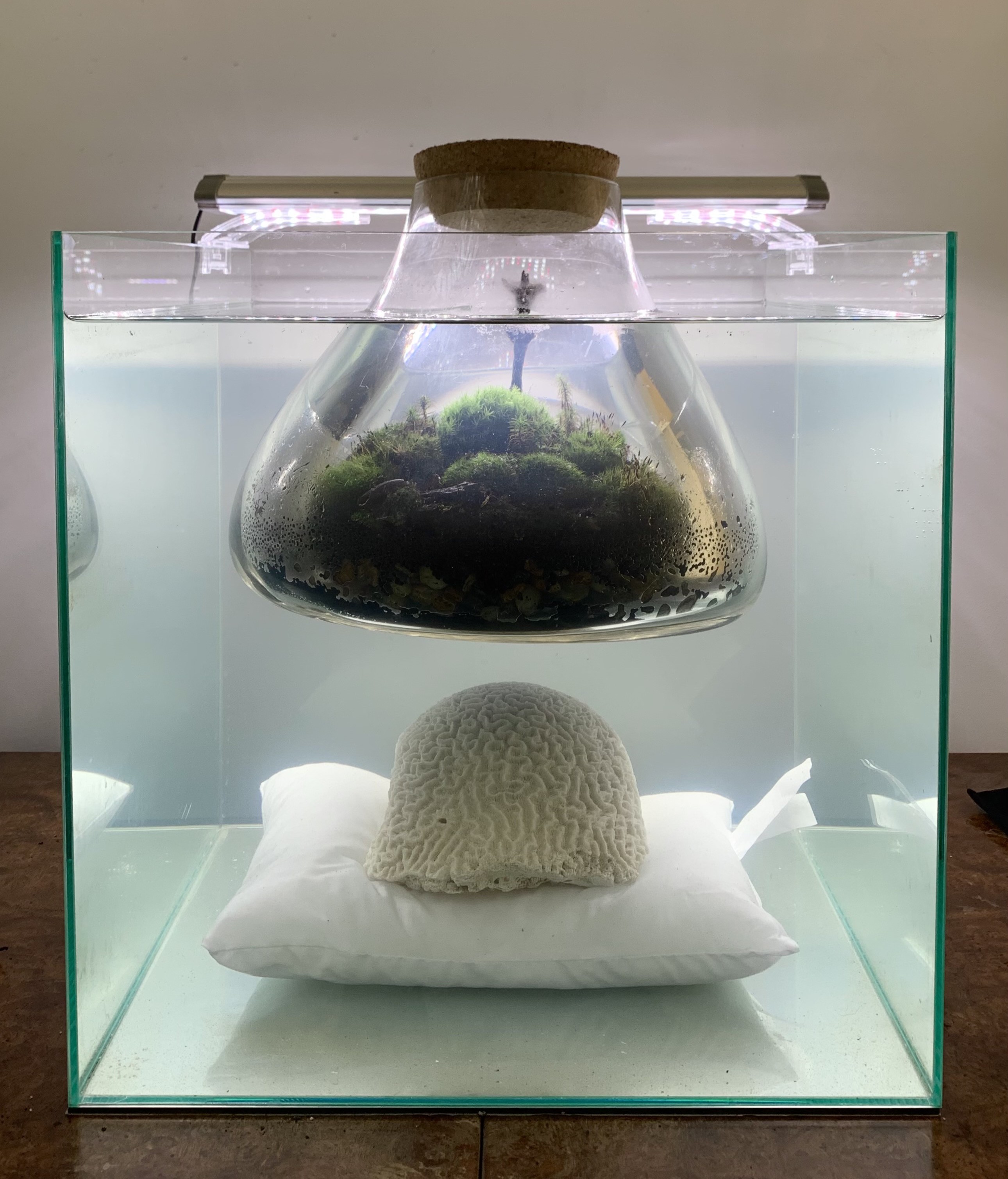
Fossil Memory, Various collected mosses and liches, springtails and dwarf isopods, soil, rocks, activated carbon, glass, water, brain coral, pillow, grow light and aquarium. 18 x 16 x 16 inches (2020)
An Interview with Christopher Lin by Olivia Ann Carye Hallstein
Christopher Lin is a constructor of worlds, our worlds. His images create a vantage point into a reality where humanity no longer exists. His work sits at the cusp of the surreal and the actual often creating sci-fi-esc installations and works that use actual fossils. During times of our own dystopian reality, Christopher’s imaging relates what is real to a vision of what could be without us.
Hello Christopher, thank you for this interview. Let us jump right in.
Your process involves both deep research, collaboration with the past, and imagination. Would you discuss your process to create these works?
My practice visualizes the ecologies we create and inhabit in the Anthropocene through surreal collaborations with nature. Combining elements of scientific investigation and material exploration, I make performative sculptures and installations that incorporate familiar objects interacting in unfamiliar ways to encourage viewers to question the framework of our everyday world. More interested in the poetics of re-contextualization than representation, I collect, deconstruct, and recombine materials to create chimeras that reflect on the existential trauma of environmental anxiety. These ephemeral constructions allude to their impermanence and, by proxy, our own.
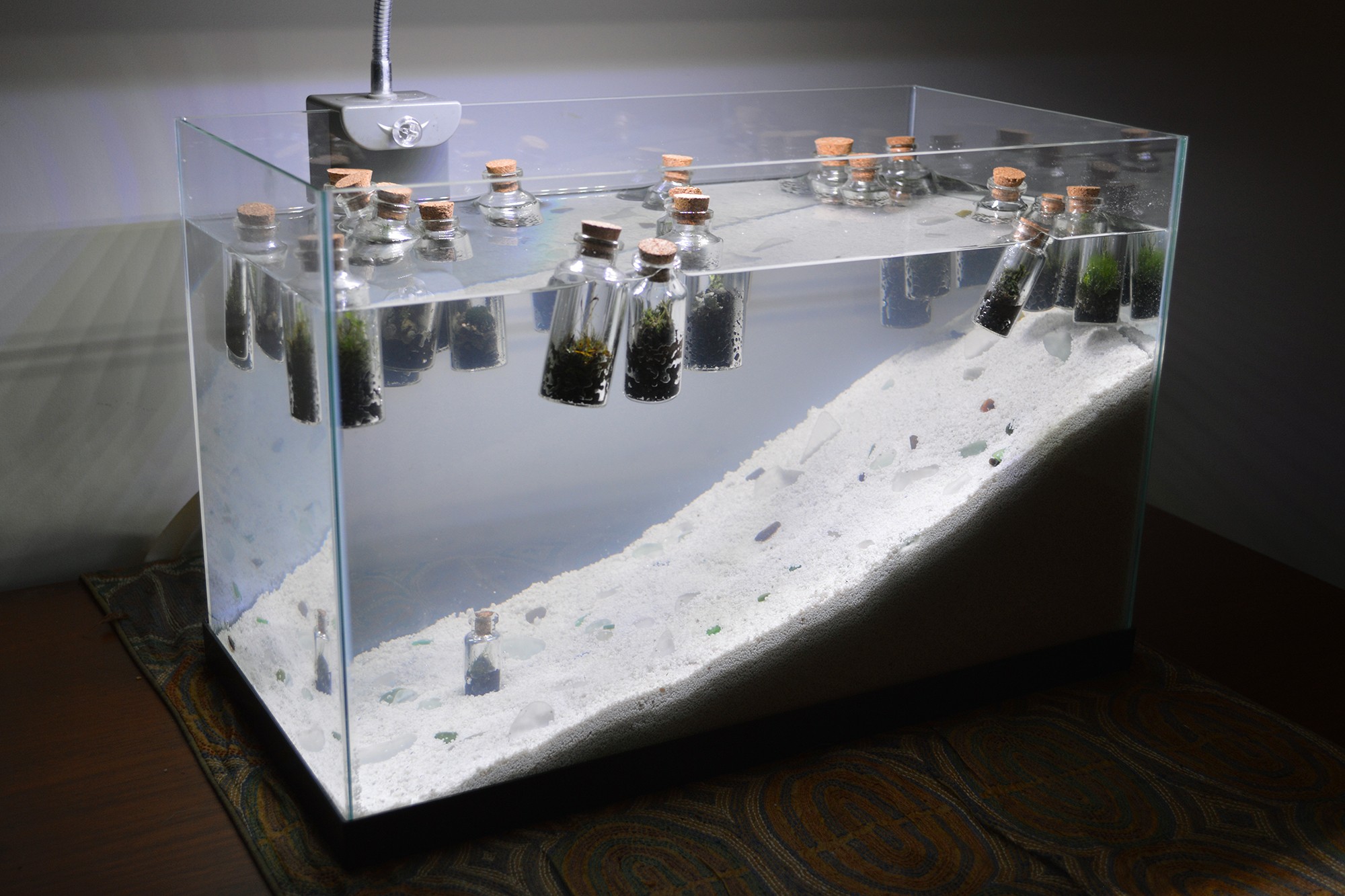
Zuru, zuru (Drifting), Carious collected mosses and lichens, springtails and dwarf isopods, soil, activated carbon, glass bottles, water, sand, sea glass, and aquarium, 10 ½ x 16 ¼ x 8 3/8 in, 2020
My ongoing body of work, titled Future Fossils, explores the eventuality of human absence. I have long been inspired and fascinated by fossils of extinct species in distant eras, memento moris which provoke thoughts of our own inevitable end and of the material world we will leave behind. In Future Fossils, I approach the concept of human extinction not through pessimism, but as the inevitable and unavoidable truth to our existence—one that also contains incredible beauty in its transience. Influenced by Buddhist teachings and environmental ecology, I connect fragments from both creation myths and extinction events to visualize this eventuality that is critical to understanding the whole cycle of existence from beginning to end. This ongoing project is an exploration to attain a better understanding of our place in this world both spiritually and scientifically.
I collect, deconstruct, and recombine materials to create chimeras that reflect on the existential trauma of environmental anxiety.
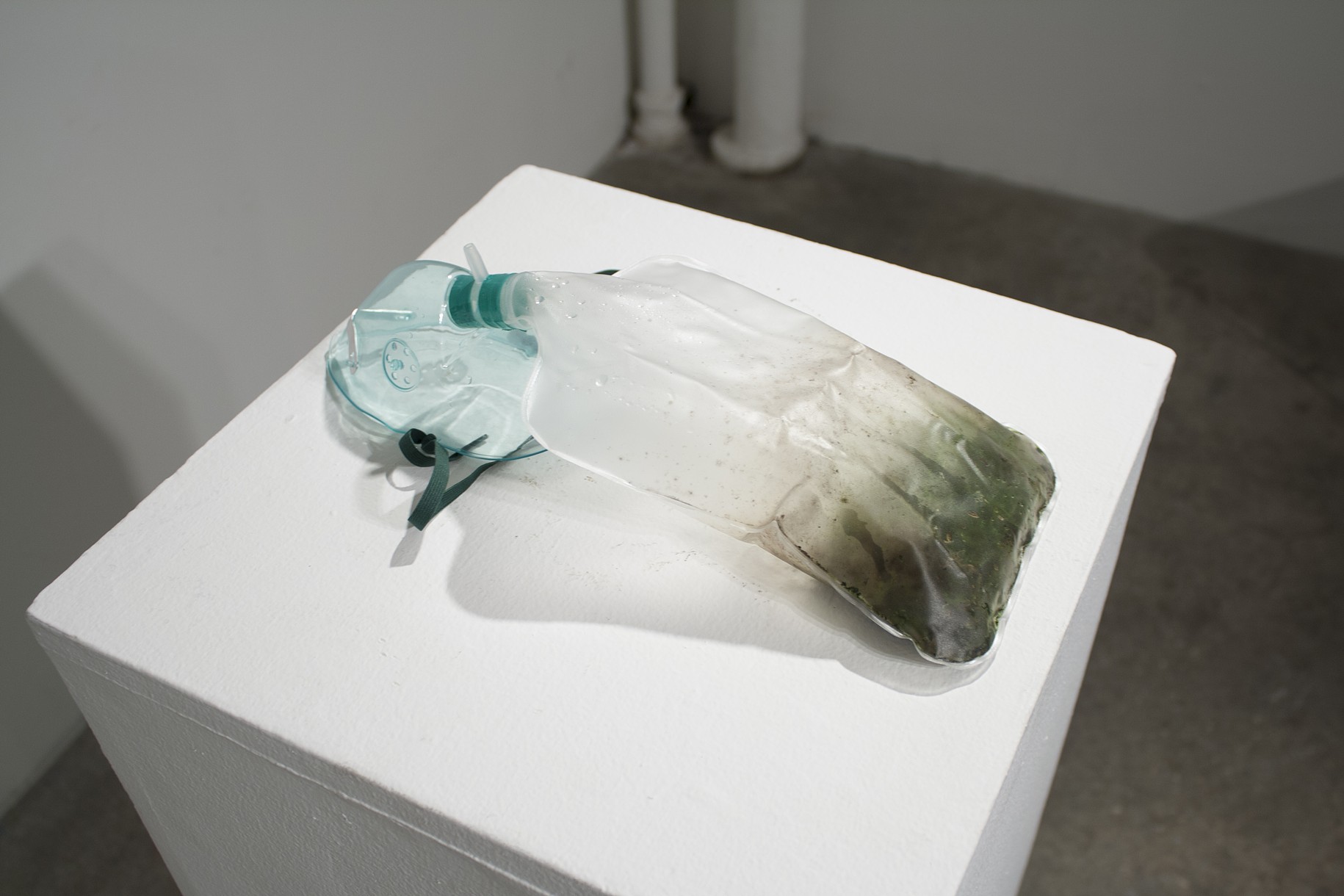
Symbiont, Non-rebreather oxygen mask and pleurocarp moss, 3 x 12 x 4 in, 2014
In your practice as an artist, you combine real found organic elements and place them into often sterile and surreal installations. What is your goal in showcasing your environmental activism in an otherworldly form?
My installations are constructed in this manner to reveal the science fiction nature of today’s world, its material construction, and its values. We often look at science fiction as some kind of distant fantasy, an impossible dystopia, but we are currently living in yesterday’s science fiction. With the pace of material production and technological advances, we do not have the perspective to process the many changes that become quickly integrated into our everyday lives. A few decades ago, the idea of indoor vertical farming replete with grow lights and hydroponic systems would seem like some distant dream, but today it is not only possible but happening in many places in the world. These advances have obvious benefits but also less obvious consequences, and buried even deeper within this aspiration is a kind of dystopian metaphor of technological survival. By revealing the science fiction reality of today’s surroundings, I hope to make some of our contemporary ideas and advances more unfamiliar, despite how normal they appear on the surface, so we can better understand where we are and where we might be going.
We often look at science fiction as some kind of distant fantasy, an impossible dystopia, but we are currently living in yesterday’s science fiction.
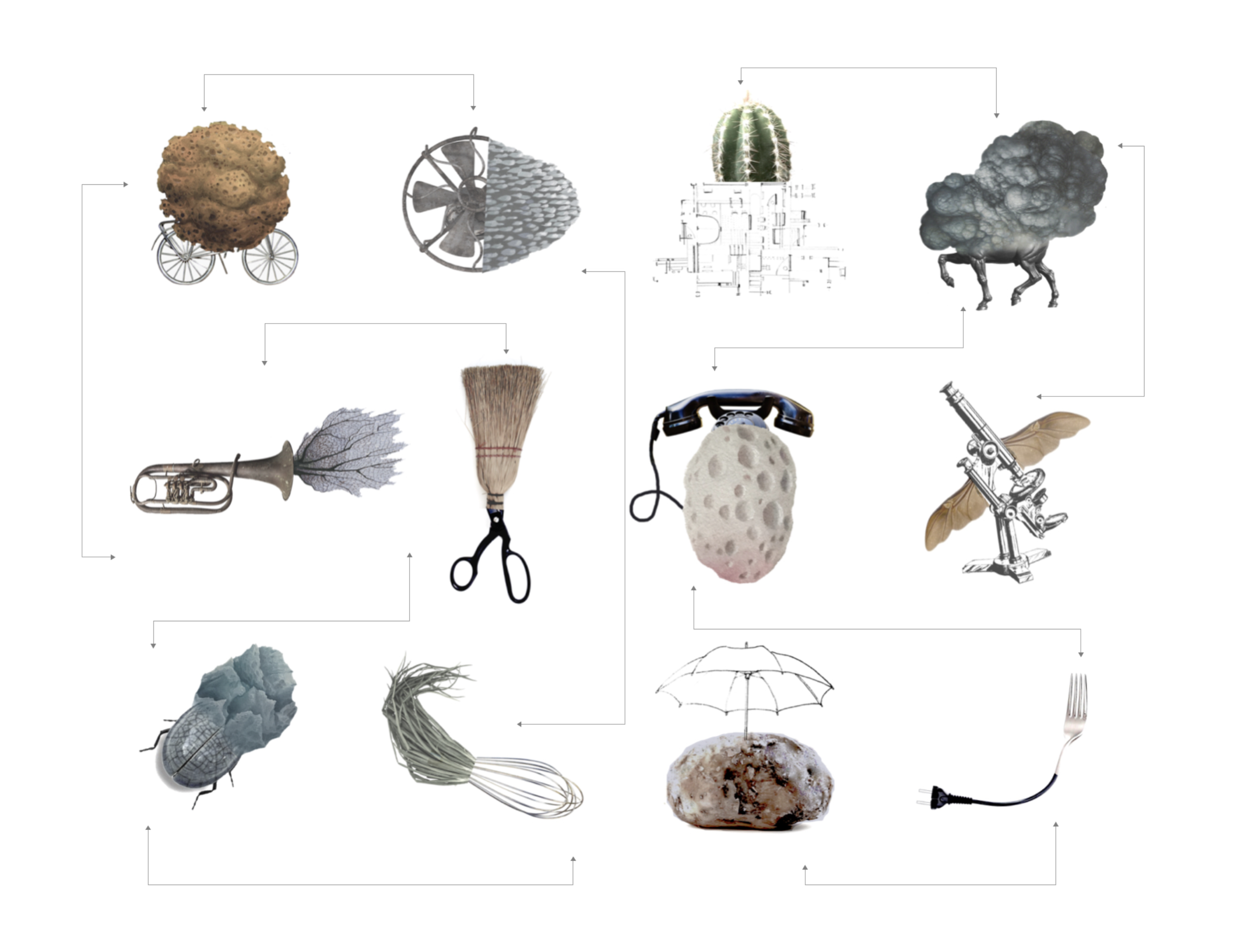
Sprechgesang Institute, Homepage Image
Perhaps with that understanding we can move towards a better future! And speech is part of that shift in focus. You are a co-director of Sprechgesang Institute which is a place for cross-disciplinary creatives to produce new language related to art. What are your hopes for the roles of language and interdisciplinary work?
Developing an interdisciplinary language is critical to representing our contemporary world because it is so quickly changing both in its foundational ideas but also in its sounds, textures, and tastes. As a collective, Sprechgesang Institute is centered around performance as a medium to conduct cross-disciplinary experimentation, and our projects have ranged from lecture series to dining experiences to internet plays. It has been exciting to work between these nontraditional performative frameworks through the lens of collaboration and reinterpretation. Our members include a cellist, a cheesemonger, a neuroscientist, a journalist, as well as various artists, and the products of our collaborative syntheses are often resonant. Through our explorations of new in-between languages, we are searching for new forms, methods, and approaches to question conventional methods of understanding and meaning making. Recently we discussed topics of mathematics such as cellular automata and pythagorean music in Idio-Maths, a continuation of our experimental lecture series, and we are currently working on a contemporary reinterpretation of Lachrimae, a collection of variations of mourning songs from the 1600s by John Dowland, himself a plague survivor, which seems all too fitting for our current moment of prolonged loss.
I hope to make some of our contemporary ideas and advances more unfamiliar, despite how normal they appear on the surface, so we can better understand where we are and where we might be going.
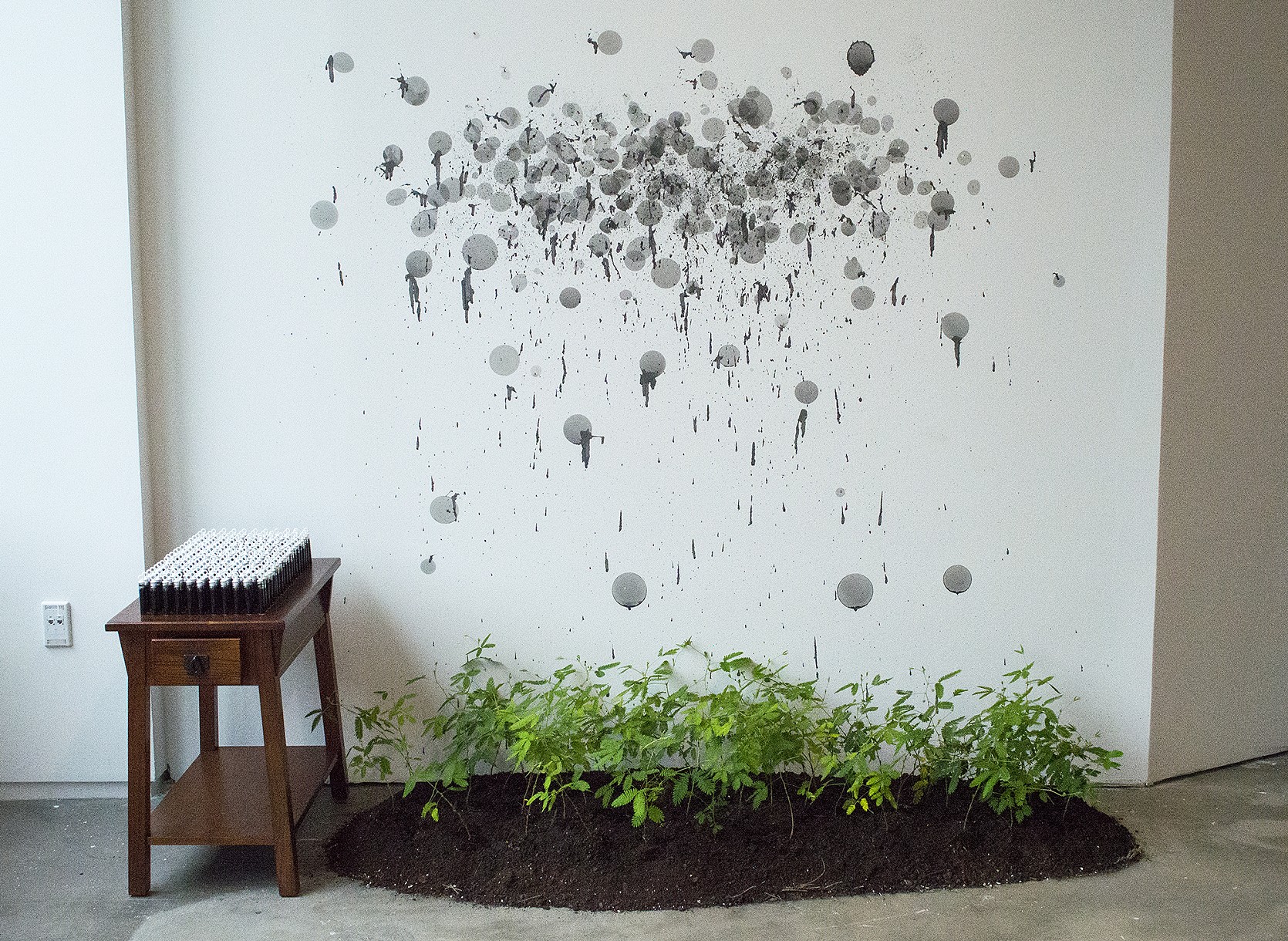
Where we begin and end, ink, soap, water, soil, plastic vials and bubble wands, end table, and sensitive plants (Mimosa pudica), 2015